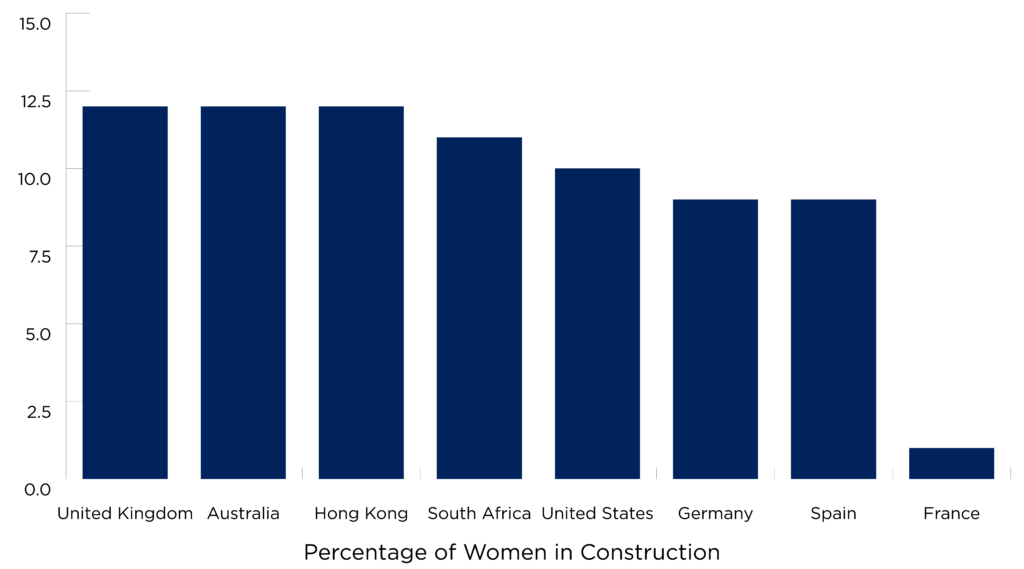It is a fact: women are severely underrepresented in the construction industry.
And although it has been a male-dominated field for many years with women facing numerous challenges and obstacles in trying to break into this space, it seems that even in this day and age the struggle persists and very little is done to catalyse the opposite.
The fight for equality in the construction industry is a long and difficult one, but it is a fight that must be fought. By advocating for change, we create an environment for people to be heard – all in pursuit of a more equitable working environment. Females are – and continue to be – an incredible asset to businesses, bringing a distinctive, empathic culture and creative way of thinking to the proverbial table.
Despite these challenges, women are breaking down barriers and proving that they have what it takes to succeed in this demanding field.
South Africa and other statistics
It is said that companies that fall within the highest bracket of gender-diverse workplaces tend to outperform their competition by a significant margin. In South Africa, women make up just over 10% of the construction workforce, a statistic that is mirrored in many other countries around the world. This disparity is often attributed to a lack of access to education and training opportunities, and a persistent cultural bias that views construction as a “man’s job”.
One of the main challenges faced by women in the construction industry is the lack of support, respect and mentorship from their male counterparts. Women often face sexism, discrimination and unequal pay, making it difficult for them to advance in their careers. For those females in leadership roles, the scale of work-life balance comes into play and then, inevitably, less assertiveness when negotiating remuneration packages or seeking promotions, because “you’re a mother first”.
The graph below depicts the percentage of women that make up the construction sector in various countries. Although some countries have shown great improvement over the past decade, most continue to fall just short of 10%.

The UK’s efforts to create a more diverse and inclusive construction sector are steadily shifting the needle. Several government initiatives such as the Women in Construction program, and industry partnerships such as Women in Property and the Women’s Engineering Society, are a few of the contributors to creating the change that is so desperately needed.
Why this is important
By fostering a culture of inclusiveness, the construction industry can create a welcoming environment that attracts and retains a diverse range of talented individuals, including women. This not only benefits women, but also benefits the industry as a whole by bringing in new perspectives and ideas that can drive innovation and growth.
What is so often overlooked is the unique set of skills and attributes that females bring to the workplace – essential for creating a diverse and inclusive environment:
Strong communication skills – women tend to be more effective communicators and are better at building relationships with their colleagues. This makes them valuable members of any team and helps to promote a positive work environment.
Collaborative approach – women are often more collaborative and work well in teams, which can lead to improved problem-solving and decision-making processes.
Emotional intelligence – women are (or so they say) more in tune with their emotions and the emotions of others, which helps to create a more empathetic and understanding workplace.
Attention to detail – women are generally very detailed-orientated and meticulous. This is incredibly important when the focus is on ensuring that projects are completed with the required accuracy and quality.
Creativity – women bring a unique perspective to the workplace and are often able to come up with innovative solutions to problems. This truly springs from the fact that men and women think so differently and diversity brings a range of perspectives to the table.
Diversity and inclusion in RLB
RLB has a strong focus on building a diverse workforce and closing the gender pay gap. The diversity and inclusion strategies and policies that form part of the global business are not only driven by governance, but by the need to do what is fair and ethical. The deliberate actions of our senior leadership teams across all offices to increase our female workforce, in particular, is astounding. It is as a result of these decisions within the core business that RLB proudly strives to create a positive and inclusive working environment.
Conclusion
Even though women are making significant progress in the construction industry, there is still much work to be done to ensure that they have equal opportunities and the kind of support that encourages an inclusive working environment. In truth, there is a lot that can be done.
It is time for companies, organizations, and society as a whole, to recognize the valuable contribution that women can make in the construction industry and work together to eliminate the barriers that prevent them from achieving their full potential.
FURTHER INFORMATION:


